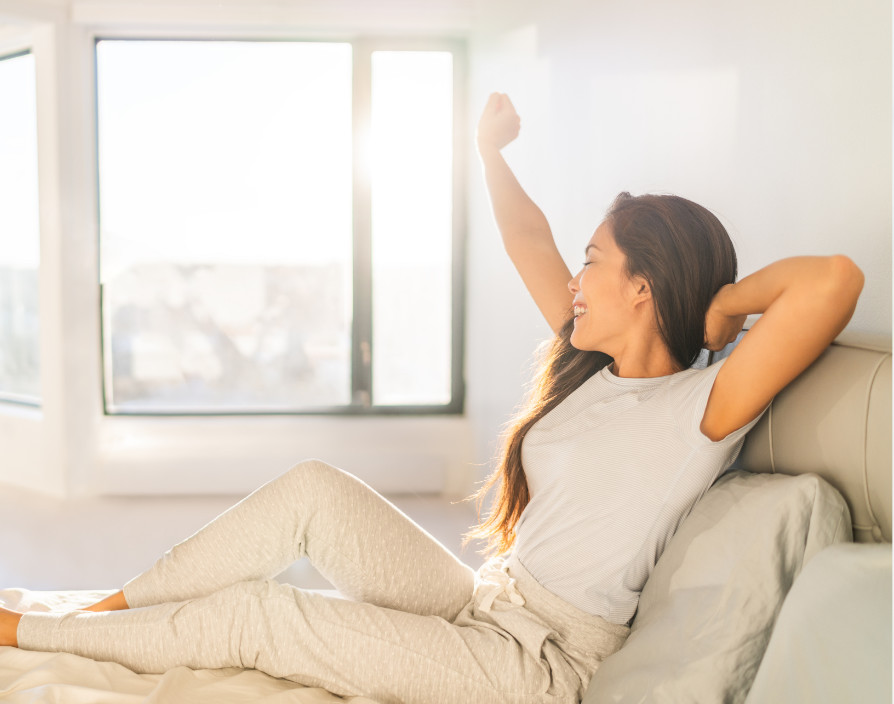The national lockdown currently in place across the UK is designed to curb the spread of Coronavirus and reduce the R rate. With the Prime Minister recently outlining the conditions which would bring England out of lockdown, and with the Welsh, Scottish and NI governments expected to do the same, scientists are warning against setting arbitrary dates. The prolonged and phased nature of the PM’s proposal makes things very challenging for those businesses that are unable to open their doors to customers, or that rely on workers no longer working remotely. It also begs the question ‘ what must small business owners do to prepare for life after lockdown? What preparations are necessary to ensure offices become a destination that customers and employees are willing to return to?
Understand the importance of air quality
The science is clear ‘ clean, safe air is vital to prevent transmission of disease indoors. The World Health Organisation updated its guidance late last year surrounding the airborne transmission of Coronavirus, while a study in Korea found that a person caught Coronavirus at a restaurant through infected air, from a person breathing more than 6.5 metres away. Academic research from Cambridge University also found that a supply of fresh air can disperse the virus and cut the risk of Coronavirus transmission by 70 ‘ 80%.
The technology tackling infected air
Air purification solutions could play a vital role in reducing the risks associated with airborne viruses and bacteria, helping to protect staff and customers indoors. Innovative solutions, such as VIRUSKILLERTM – which kills 99.9999% of viruses with a single air pass, including Coronavirus* ‘ will be essential in tackling this problem. Its UV-C technology provides a photochemical deconstruction of the RNA and DNA of microorganisms. This deactivates their reproductive processes so that the Coronavirus, and other viruses, can no longer spread, before the clean, purified air is released back into the premises.
Unlike traditional air purifiers that ‘trap’ airborne particles and microbes, VIRUSKILLERTM also decontaminates the air. It not only traps, but also kills airborne viruses, bacteria and fungi**. Thanks to its unique filtration process, reactor chamber and UV-C technology, when placed correctly the unit takes control of the airflow in a room, drawing contaminated air in from the ‘breathing zone’ and then releasing fresh, clean air back into the room.
Impact of clean air goes beyond Coronavirus
A huge benefit of air purification is virus transmission control, but there are other advantages too. These range from boosting overall wellness, to supporting healthier hearts and lungs, which is particularly relevant to those with more fragile immune systems or asthma sufferers. Conversations around the importance of air purification are likely to linger well beyond the pandemic.
Last December a coroner ruled that a 13-year old with severe asthma conditions died of air pollution, the first ruling of its kind in the UK. The ruling is likely to increase pressure on the government to significantly reduce air pollution levels. A study from 2019 found that in some areas of the UK, air quality in people’s homes was 3.5 times worse than that outside ‘ the study’s experts said this is because polluted air from outside becomes trapped inside well-insulated homes. For businesses in dense city areas, air purification will be important to ensure the wellbeing of those in the building as well as a measure that might become essential to prevent disease transmission.
Adopt a holistic approach to hygiene
While air quality is a vital consideration, it is not the sole route of transmission for Coronavirus and other infectious illnesses as there are three main transmission routes (person to person, surface to person and air to person). Consequently, it’s more important than ever that a business’s overall hygiene standards are not allowed to slip in any area.
With government guidance and legislation constantly evolving as a result of the pandemic, a holistic approach to a business’s hygiene and safety is a must. We recommend undertaking a HATS critical appraisal survey to assess the key elements of a building. HATS is used to survey premises in order to assess risks and implement solutions that ensure safety and compliance. It focuses on four key areas ‘ Hygiene Factors, Atmosphere, Touchpoints and Social Distancing.
‘Hygiene Factors’ refers to the provision of hand cleaning and sanitising products. Poor hand hygiene creates potential transmission routes for Coronavirus and other microbial infectious diseases and pathogens, so the first thing to do is to ensure that employees, customers and clients have the ability to thoroughly wash, dry and sanitise their hands regularly. Automatic taps and dryers, as well as no-touch soap, paper towel and sanitiser dispensers are ideal because the user does not have to make direct contact with the unit in order to operate them. These would ideally be available in washrooms and other important areas such as changing rooms, waiting areas and kitchens. Sanitiser stations should be installed throughout the facility to give people the opportunity to quickly sanitise as needed.
When considering ‘Atmosphere’ professionals help assess the quality of the property’s air. It’s important air conditioning units and ventilation systems are regularly cleaned and serviced, and that advice is given if new air ventilation systems will be needed, in accordance with government guidelines. This part of the assessment also covers air purification technology and will give recommendations on how and where solutions such as VIRUSKILLERTM can be deployed.
‘Touchpoints’ looks at high-frequency shared touchpoints within a premises and ensures they are incorporated into a regular cleaning regime. Due to their different sizes, usage and sometimes 24-hour operations, facilities can present a disinfection challenge. There are a range of innovative disinfection techniques used in these more complex cleaning areas such as ultraviolet (UV) lamps.
Finally, it’s important to consider ‘Social distancing.’ Wherever possible, business owners must assess the floor space to ensure this can be practiced. Common solutions include signage, retractable barriers as well as floor mats.
Last words
With new scientific evidence showing that airborne transmission must be seriously considered when people are indoors, a cleaning strategy should include air purification alongside ventilation as part of a holistic approach to safety and hygiene. Innovative technologies can help to create a safer environment and break the chain of airborne transmission, but should be used in conjunction with hygiene and social distancing protocols to create safer environments.
* When independently tested against Coronavirus DF2 (a surrogate for Coronavirus), Adenovirus, Influenza and Polio, the unit was found to kill 99.9999% of viruses on a single air pass.
**When independently tested against reference bacteria (Klebsiella pneumoniae, Mycobacterium tuberculosis, Staphyloccus aureus subsp. Aureus, Streptoccocus pneumoniae, Streptococcus pyogenes, Escherichia coli), the unit was found to kill 99.9999% of bacteria on a single air pass.
“
Share via:








































